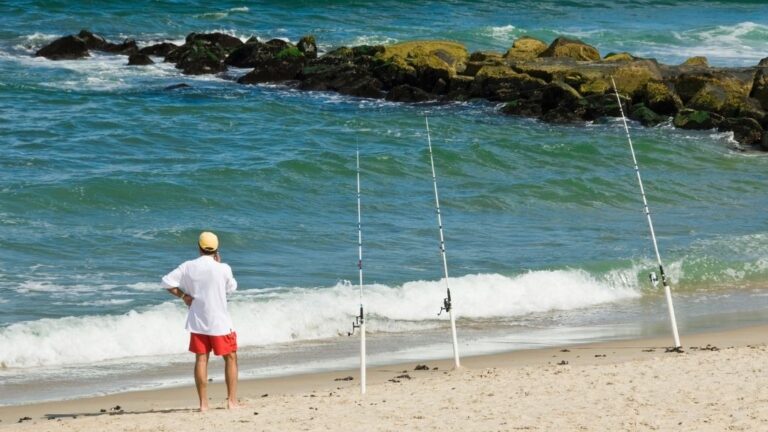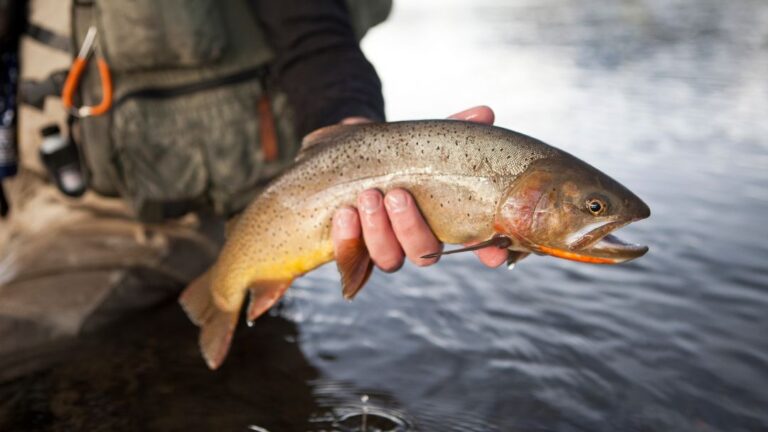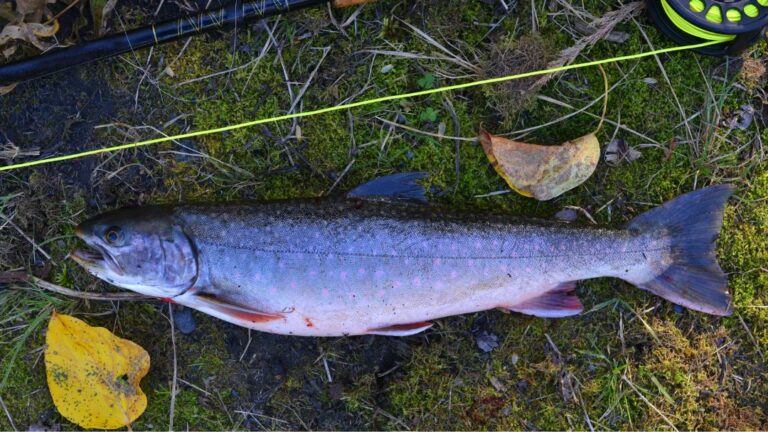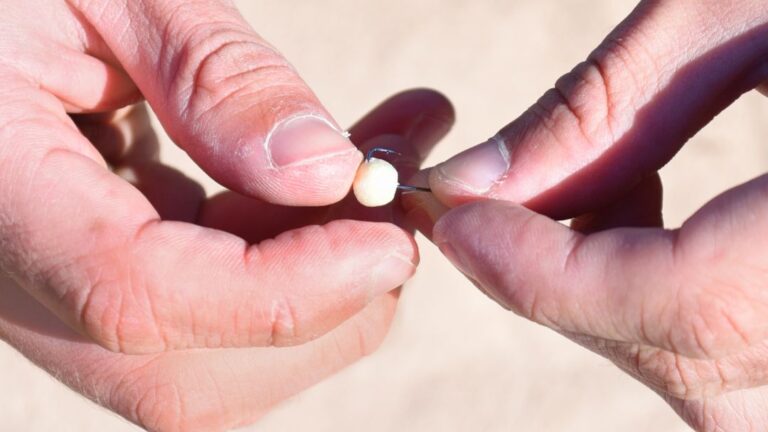Best Hook Size For Trout: Tested By Experts
The best hook size for trout is typically between size 8 and size 12. Trout have small mouths and tend to be attracted to smaller hooks.
When fishing for trout, using a hook that is too big can lead to missed bites. However, using a hook that is too small may result in the trout swallowing the hook, leading to injury or mortality.
By using a hook size 8 to size 12, you can increase your chances of hooking into trout while minimizing harm to the fish.
So, remember to choose the appropriate hook size when targeting trout to maximize your fishing success and promote responsible angling practices.
Factors To Consider When Selecting Hook Sizes
Choosing the best hook size for trout requires considering factors like the desired bait size, water clarity, and fish behavior. Tailoring the hook size to these variables will increase your chances of a successful catch.
When it comes to trout fishing, selecting the right hook size is crucial for success. The size and age of the trout, the fishing technique and bait being used, as well as the fishing location and water conditions, all play a significant role in determining the best hook size to use.
In this section, we will explore these factors in detail to help you make an informed choice.
Age And Size Of Trout
When targeting trout, it is essential to consider their age and size. Different hook sizes are suitable for different sizes of trout, ensuring that the hook is neither too big nor too small. Here are some key points to keep in mind:
- Small hooks, ranging from size 14 to 18, are ideal for targeting smaller trout, especially young or hatchery-raised trout. These hooks are less likely to be noticed by smaller fish and allow for a delicate presentation.
- Medium-sized hooks, such as sizes 10 to 12, are versatile options that work well for a wide range of trout sizes. These hooks can target both medium-sized trout and larger fish that may be present in the fishing spot.
- For larger trout or when targeting trophy-sized fish, larger hooks in sizes 6 to 8 may be more appropriate. These hooks provide better hook sets and can handle the weight and power of bigger trout.
Fishing Technique And Bait
The fishing technique and bait being used also influence the choice of hook size. Different techniques require different hook sizes to maximize success. Consider the following:
- For fly fishing, which is a popular method among trout anglers, selecting the right hook size is crucial for proper fly presentation. The hook size should match the size of the fly being used, ensuring a natural and realistic presentation that entices trout to strike.
- When using live bait, such as worms or minnows, it is important to match the hook size with the bait size. A hook that is too large can make it difficult for the trout to take the bait, while a hook that is too small can result in missed hook sets.
- Artificial lures, such as spoons or spinners, often come with pre-determined hook sizes. It is advisable to stick with the recommended hook size for optimal lure performance and fish attraction.
Fishing Location And Water Conditions
The fishing location and water conditions also dictate the hook size that should be used. Here are some considerations:
- In clear and calm water conditions, trout are more likely to be cautious and meticulous in inspecting their prey. Using smaller hooks can be beneficial in such scenarios, as they are less likely to spook the fish and result in successful hook sets.
- If fishing in murky or fast-moving water, larger hooks can help improve visibility and increase the chances of trout spotting the bait. These hooks provide a stronger presence and can attract trout from a distance.
- Additionally, if fishing in areas where other fish species coexist with trout, using larger hooks can help prevent smaller fish from stealing the bait. It allows for better control over the fish you are targeting.
By considering the age and size of the trout, the fishing technique and bait being used, as well as the fishing location and water conditions, you can determine the best hook size for trout fishing. Keep in mind that experimentation and adaptation may be necessary based on specific fishing situations.
So, get out there and enjoy the thrill of trout fishing with the right hook size for success!
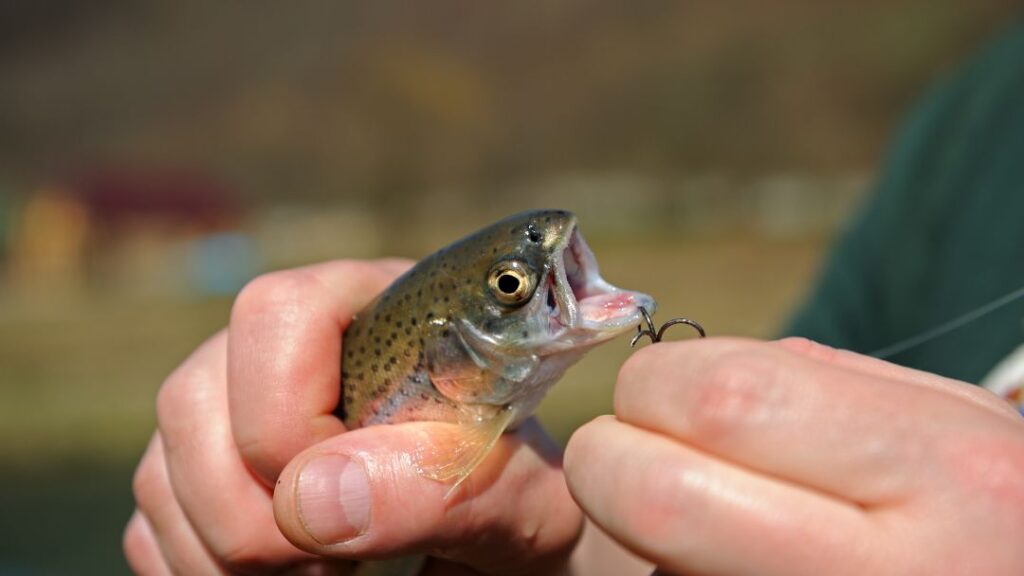
Understanding Hook Sizes For Trout Fishing
Understand the best hook size for trout fishing with our guide. Discover the ideal hook sizes to ensure success in catching trout.
Trout fishing is a popular outdoor activity enjoyed by many anglers. However, choosing the right hook size for trout can be confusing, especially with the wide variety of options available. In this section, we will explore the topic of hook sizes for trout fishing and provide you with useful information to help you make the best decision.
Let’s dive into the world of hook sizes and understand how they differ between brands.
Decoding Hook Size Numbers And Patterns
- Hook sizes are represented by numbers, with smaller numbers indicating larger hooks and vice versa.
- The numbering system for hooks is not standardized across brands, which can lead to some confusion for anglers.
- It’s important to understand that different patterns of hooks may also affect the size and shape of the hook point, as well as the overall design.
How Hook Sizes Vary Across Brands
- Each fishing tackle brand may have its own unique sizing system for hooks.
- A size 12 hook from one brand may not be the same size as a size 12 hook from another brand.
- It is essential to refer to the specific sizing chart provided by the brand you are purchasing from to ensure you select the correct hook size for trout fishing.
Common Hook Sizes Used For Trout Fishing
- Size 12: This is a popular hook size for trout fishing, especially for smaller trout species or when using bait such as worms or power bait. The smaller size allows for a more natural presentation and increased hook-up rates.
- Size 10: Slightly larger than a size 12 hook, size 10 hooks are commonly used when targeting larger trout or when using slightly larger baits, such as minnows or small spinners.
- Size 8: This hook size is suitable for targeting larger trout or when using larger baits, such as crayfish imitations or larger spoons.
- Size 6: Ideal for targeting trophy-sized trout or when using larger artificial lures, such as streamers or large spinners.
Understanding hook sizes for trout fishing is crucial for optimizing your chances of success on the water.
By knowing the basics of hook sizing and considering the common hook sizes used for trout fishing, you can make informed decisions when selecting the right hook for your next trout fishing adventure.
Best Hook Sizes For Different Trout Fishing Techniques
For trout fishing, the best hook size depends on the specific technique used. Whether you’re fly fishing, bait fishing, or using lures, choosing the right hook size is crucial for success on the water.
Trout fishing is a popular activity among anglers, and having the right hook size can significantly impact your success. Different trout fishing techniques require different hook sizes to ensure the best chance of landing a trout. In this section, we will explore the best hook sizes for various trout fishing techniques.
Fly Fishing For Trout
Fly fishing is a classic method of trout fishing that involves casting an artificial fly to mimic real insects. The following hook sizes are recommended for fly fishing:
- Size 14-18 hooks for dry fly fishing: Dry flies imitate insects floating on the water’s surface, and smaller hook sizes are ideal for matching the size of hatching insects.
- Size 14-20 hooks for nymph fishing: Nymphs imitate underwater insects, so slightly larger hook sizes are needed to accommodate these patterns.
- Size 6-10 hooks for streamer fishing: Streamers resemble small baitfish and are typically used to target larger trout. Larger hook sizes are necessary to secure the fish.
Spin Fishing For Trout
Spin fishing involves casting and retrieving artificial lures or live bait to entice trout. Depending on the fishing method, the recommended hook sizes differ:
- Size 6-10 hooks for live bait fishing: Live bait, such as worms or minnows, can be used with larger hooks to catch trout.
- Size 8-12 hooks for artificial lure fishing: Artificial lures like spinners or spoons require smaller hooks to imitate small baitfish and insects.
- Size 10-14 hooks for PowerBait fishing: PowerBait is a popular trout bait that can be molded onto a hook. Smaller hook sizes are suitable for effectively presenting the PowerBait.
Remember, the hook size you choose ultimately depends on factors such as the size of the trout you’re targeting, water conditions, and personal preference. Experimenting with different hook sizes and techniques will help you find the right combination for a successful day of trout fishing.
Match The Hook Size To The Trout Species
Match the hook size to the specific trout species to optimize your chances of success. Tailoring your hook size ensures an effective presentation and increases the likelihood of a hookup. Find the best hook size for trout through meticulous matching.
Trout fishing enthusiasts understand the importance of choosing the right hook size for each trout species. By matching the hook size to the specific trout you are targeting, you can greatly increase your chances of a successful catch. In this section, we will discuss the optimal hook sizes and fishing techniques for brown trout, rainbow trout, and brook trout.
Brown Trout
When it comes to targeting brown trout, it is crucial to use the appropriate hook size to entice these elusive creatures. Consider the following information:
- Optimal Hook Sizes for Brown Trout:
- Size 6: Ideal for fishing brown trout in larger rivers or lakes.
- Size 10: Suitable for brown trout in smaller streams or when using live bait.
- Size 12: Great for brown trout in heavily fished areas or when using artificial lures.
Fishing Techniques for Brown Trout:
- Use natural-looking bait, such as earthworms or minnows, to attract brown trout.
- Cast your line near structures such as fallen trees or rocks, where brown trout often seek shelter.
- Employ stealth while fishing for brown trout, as they are known to be wary and easily spooked.
Rainbow Trout
For those targeting rainbow trout, selecting the right hook size is essential. Here are the optimal hook sizes for rainbow trout:
- Optimal Hook Sizes for Rainbow Trout:
- Size 8: Perfect for rivers or streams with average-sized rainbow trout.
- Size 12: Suitable for stocked rainbow trout in ponds or lakes.
- Size 14: Ideal for fishing rainbow trout in clear and shallow water.
Fishing Techniques for Rainbow Trout:
- Use brightly colored lures or flies to attract the attention of rainbow trout.
- Cast your line near underwater structures, such as submerged logs or vegetation, where rainbow trout often feed.
- Vary your retrieve speed to mimic the movement of different prey and increase your chances of enticing a strike.
Brook Trout
Brook trout offers anglers an exciting challenge, and using the right hook size is crucial for success. Consider the following information:
- Optimal Hook Sizes for Brook Trout:
- Size 8: Recommended for brook trout in average-sized streams or rivers.
- Size 12: Great for small brook trout found in mountainous areas.
- Size 16: Suitable for targeting brook trout in small creeks or when using fine-tuned fishing techniques.
Fishing Techniques for Brook Trout:
- Use lightweight tackle and small baits to match the size of brook trout prey.
- Focus your fishing efforts in cold, clear waters, where brook trout thrive.
- Present your bait or lure close to the water’s surface, as brook trout are known to feed near the top.
Remember, understanding the hook sizes that best suit each trout species and employing effective fishing techniques will significantly enhance your chances of a successful catch. So gear up, get out there, and enjoy the thrill of trout fishing!
Tips For Proper Hook Size Usage
Discover the best hook size for trout fishing with these expert tips. Choose the right hook size to ensure a successful catch and optimize your fishing experience.
Trout fishing is a popular sport that requires skill, precision, and the right equipment. One crucial factor in trout fishing is using the proper hook size. Choosing the right hook size can greatly impact your success in catching trout. In this section, we will explore some tips for proper hook size usage, the variables that hook size can affect, and the signs that indicate incorrect hook size usage.
Ensuring Proper Hook Set And Hooking Efficiency
To ensure a proper hook set and maximize hooking efficiency, consider the following tips:
- Selecting the appropriate hook size is essential for hooking trout effectively.
- Use smaller hooks for smaller trout species and larger hooks for bigger trout.
- Consider the type of bait you are using and match the hook size accordingly. For example, smaller hooks work well with smaller bait like worms, while larger hooks are better suited for using larger bait or artificial lures.
- Avoid using hooks that are too large, as they may hinder the trout’s ability to take the bait properly.
- Ensure that your hook is sharp to increase hooking efficiency. Sharpen or replace dull hooks regularly.
Using Hook Size As A Variable For Catching Success
The hook size you choose can have a significant impact on your catching success. Here are some variables to consider:
- Smaller hooks are less visible to trout, increasing your chances of a bite.
- Using a smaller hook can provide better bait presentation, making it more appealing to trout.
- Larger hooks are suitable for bigger trout species and can handle larger bait or lures.
- Matching the hook size with the trout’s mouth size allows for better hook penetration and reduces the likelihood of the trout escaping.
- Adjusting the hook size based on different fishing conditions, such as water clarity and trout behavior, can improve your chances of success.
Recognizing Signs Of Incorrect Hook Size Usage
Using the wrong hook size can lead to missed bites or failed hook sets. Look for the following signs to avoid incorrect hook size usage:
- Constantly missing bites or experiencing a high number of hookups without successfully landing the trout.
- Observing trout repeatedly taking the bait but not getting hooked.
- Noticing that the hook is too large for the bait, making it difficult for the trout to take it properly.
- Experiencing frequent hook pulls or fish escaping during the fight.
By paying attention to these signs, you can adjust your hook size accordingly and improve your chances of successfully hooking trout.
Understanding and utilizing the best hook size for trout fishing is essential for a successful angling experience. By ensuring proper hook set and hooking efficiency, considering hook size as a variable for catching success, and recognizing signs of incorrect hook size usage, you can increase your chances of landing more trout on your next fishing trip.
Conclusion
Choosing the right hook size for trout fishing can greatly improve your chances of success on the water. By understanding the unique characteristics of trout and their feeding habits, you can select a hook size that matches their preferred prey and increases your chances of getting a bite.
Smaller hooks, such as size 12 or 14, are ideal for targeting smaller trout or when fishing in clear waters with finicky fish. On the other hand, larger hooks like size 8 or 10 are better suited for larger trout or when fishing in murky waters where visibility is reduced.
Experimenting with different hook sizes and adjusting your approach based on the conditions can help you find the perfect match for enticing trout to strike. Remember to also consider the type of bait or lure you are using, as this can influence hook size selection.
So, next time you head out to catch trout, be sure to give some thought to the hook sizes you’re using – it could make a world of difference in your fishing success.

